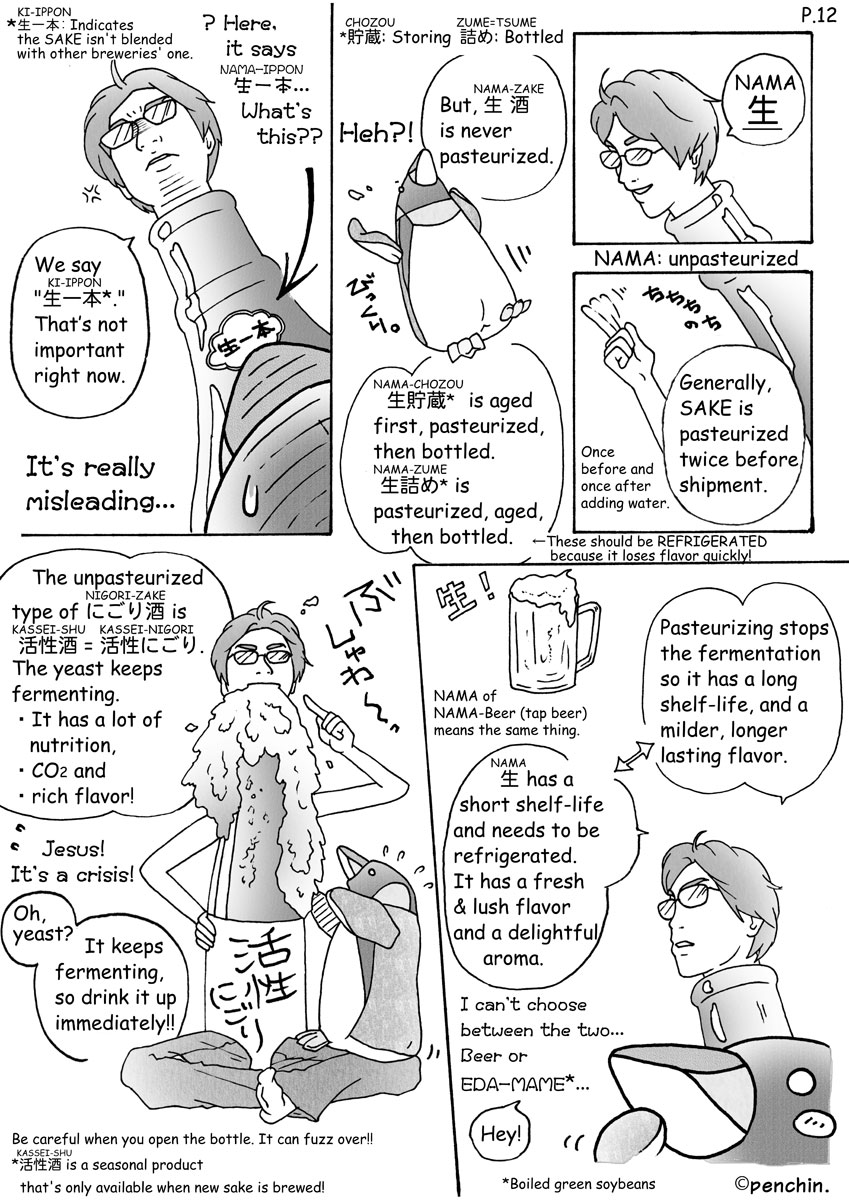|
NAMA: 生: unpasteurized
Generally,
SAKE is pasteurized twice before shipment.
Once
before and
once after
adding water.
But, NAMA-ZAKE: 生酒 is never pasteurized.
Heh?!
NAMA-CHOZOU: 生貯蔵* is aged first,
pasteurized,
then bottled.
NAMA-ZUME: 生詰め* is pasteurized, aged,
then bottled.
↑These should be REFRIGERATED
because it loses flavor quickly!
*CHOZOU: 貯蔵: Storing
ZUME=TSUME: 詰め: Bottled
? Here, it says NAMA-IPPON: 生一本...
What's this??
We say "KI-IPPON: 生一本*."
That's not
important
right now.
It's really
misleading...
*KI-IPPON: 生一本: Indicates the SAKE
isn't blended with other breweries' one.
Pasteurizing stops the fermentation so it has a
long shelf-life, and a milder, longer lasting flavor.
←→
NAMA: 生 has a short shelf-life
and needs to be refrigerated.
It has a fresh & lush flavor
and a delightful aroma.
NAMA of NAMA-Beer (tap beer) means
the same thing.
I can't choose between the two... Beer or
EDA-MAME (Boiled green soybeans)...
Hey!
The unpasteurized type of NIGORI-ZAKE:
にごり酒 is KASSEI-SHU: 活性酒 =
KASSEI-NIGORI: 活性にごり.
The yeast keeps
fermenting.
・It has a lot of
nutrition,
・CO
2
and
・rich flavor!
Jesus!
It's a crisis!
Oh,
yeast?
It keeps
fermenting,
so drink it up
immediately!!
Be careful when you open the bottle.
It can fuzz over!!
*KASSEI-SHU: 活性酒 is a seasonal product
that's only available
when new sake is brewed!
|



